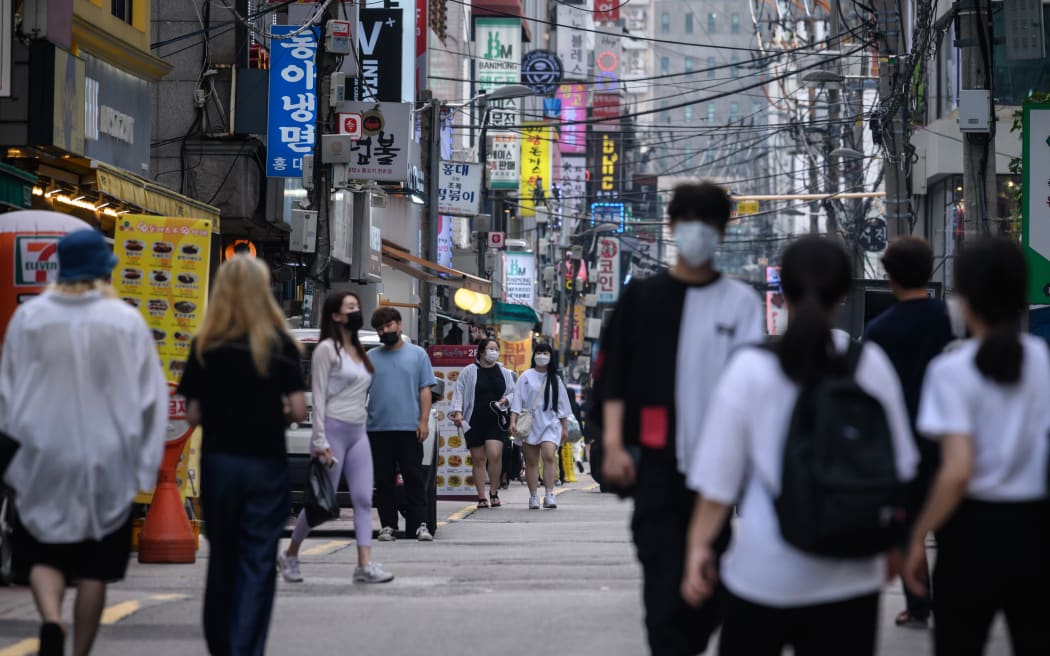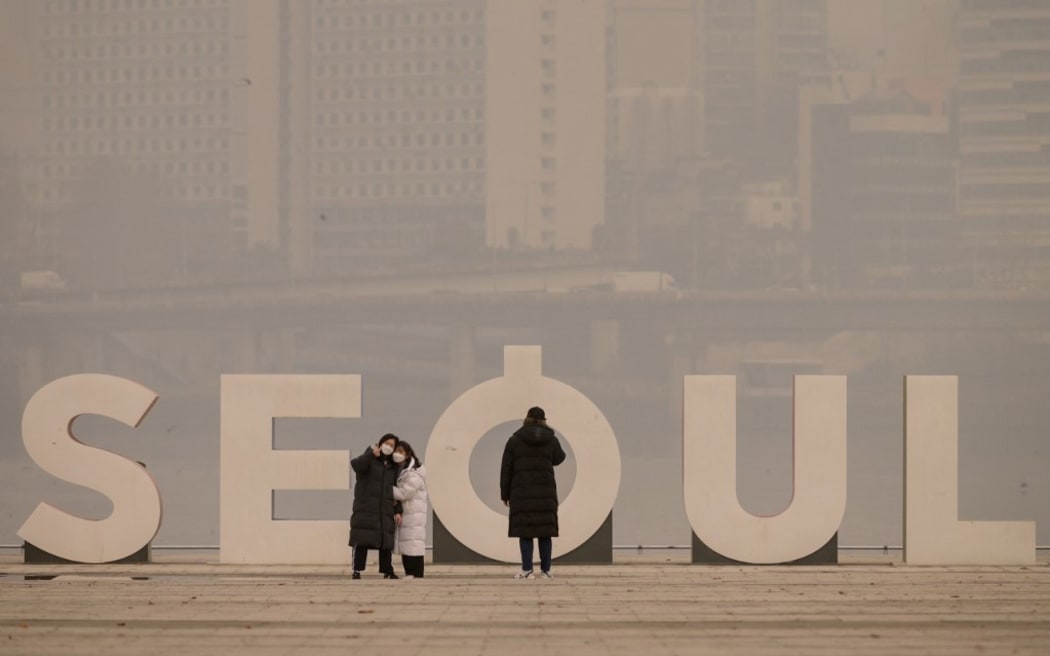But it sure feels bad.

Alexi Rosenfeld / Getty
By Jacob Stern
It’s hot outside. It’s been hot outside pretty much everywhere this summer. On five continents. In China, which is less than halfway through a predicted 40 days of extreme heat. In the United Kingdom, which recently set its new all-time heat record. In Seville, which for the first time named a heat wave. (Hi, Zoe.) And in the United States—very recently in Northern California, where a historic drought and the heat have conspired to create ideal conditions for wildfires, and in Oregon, where authorities have preliminarily blamed heat for at least 14 deaths; now in Kentucky, where it will compound deadly flash flooding that has left whole communities without electricity to power air-conditioning or refrigerators, or other relief from the heat; soon in the Northeast.
Many U.S. cities are breaking (or repeatedly breaking) the threshold of triple-digit temperatures. Salt Lake City tied its all-time mark for most consecutive 100-degree days. Boston and Denver each recently broke 100 degrees to set daily heat records. And Newark, New Jersey, did the same—on its fifth straight day in the triple digits.
Read: The world is burning once again
It’s worth keeping in mind that, as the NASA climate scientist Alex Ruane told me, daily temperature records are being broken year-round. For all the news it makes, the 100-degree cutoff is totally arbitrary. (Just ask anyone who doesn’t live in the U.S., the Bahamas, the Cayman Islands, Liberia, Palau, the Federated States of Micronesia, or the Marshall Islands—they’ll set you straight.) There’s nothing magical about 100: It’s a big round number that our minds latch on to, a quirk of psychology rather than a fact of physiology. And yet, nonsense or not, 100 degrees feels somehow commensurate with the experience it’s meant to capture. “I think this is the one place where the Fahrenheit scale is better than the Celsius scale, just in terms of resonance,” Daniel Horton, a climate scientist at Northwestern University, told me. “When it hits triple digits, you know it’s bad.” The people seem to agree. “America is wrong about everything except fahrenheit,” the writer Erin Chack tweeted over the weekend. “Farenheit is the correct way to measure temperature. fahrenheit is like ‘man, it’s so hot out. it’s gotta be like.......100 hots.’” The tweet racked up more than 298,000 likes.
That said, assessing actual danger requires a more sophisticated calculus. To do so, scientists who study heat’s effects on the human body, one of whom is the Indiana University professor Zachary Schlader, speak of the limits of “compensability,” which basically means the point at which the body can no longer offset ambient heat and, unable to cool itself, begins to warm internally. This is when the really bad stuff happens: heat cramps, heat exhaustion, heatstroke. The threshold for that depends on a number of factors. Sheer heat matters, but so too do humidity, activity, and your personal risk profile. “The evaporation of sweat is our air conditioner,” Schlader told me. “It’s our most powerful way to get rid of the heat. But it only works if that sweat evaporates.” The more humid it is outside—i.e., the more water vapor there is in the air—the harder it is for sweat to evaporate and the body to cool down. Which is why a triple-digit day in Phoenix, Arizona, can feel so much more pleasant than a double-digit day in Baton Rouge, Louisiana. (The heat index works by taking both temperature and humidity into account.)
Activity, too, strains our ability to regulate body temperature, because the more we exert ourselves, the more heat we produce and must then shed. And the longer the heat persists, the more dangerous it gets, Horton told me. The body relies on the nighttime to cool down, and although after-dark temperatures aren’t hitting 100, they’re not dipping as low as they used to either.
Even well below that tolerance threshold, though, heat can do serious damage, Schlader told me. Cooling the body is a major physiological production: The heart and kidneys, in particular, must kick into overdrive. For people with underlying conditions, that extra exertion can turn deadly long before the body hits the theoretical limits of compensability. If you look at hospitalization data, Schlader said, the biggest absolute increases come not in heat illness itself but in heart problems, kidney problems, and dehydration. As a result, we likely underestimate the true toll of some heat waves.
At both an individual and a societal level, we know how to mitigate these threats. Access to air-conditioning is key, but generally, Schlader told me, the people most vulnerable to the heat are also the ones without AC. Electric fans are a good alternative, he said, though only to a point; beyond a certain temperature—as low as 95 degrees, by some estimates—fans do more harm than good. Soaking your shirt or wetting your skin with a sponge may also help, as can drinking cold water. At a societal level, Horton told me, governments can set up neighborhood cooling centers, park buses with air-conditioning on street corners, and offer utility discounts, so that people who have AC are not scared to use it.
When I asked Horton what distinguishes this current American heat wave from the one in Europe I spoke with him about two weeks ago (or, for that matter, the ones last summer or the summer before), his answer was simple: Nothing. “It’s another heat wave, another extreme heat wave, but it’s kind of boring,” he told me. “If these things become so common, they’re just not that interesting.” By that, he did not mean to diminish anyone’s suffering. But when the same thing happens over and over, you run out of new things to say. You lose interest.
That, in short, is our predicament. The heat has become so regular that it no longer interests us—and yet the fact of its regularity is exactly why it should.
Jacob Stern is a staff writer at The Atlantic.
THE ATLANTIC
AUGUST 3, 2022It’s hot outside. It’s been hot outside pretty much everywhere this summer. On five continents. In China, which is less than halfway through a predicted 40 days of extreme heat. In the United Kingdom, which recently set its new all-time heat record. In Seville, which for the first time named a heat wave. (Hi, Zoe.) And in the United States—very recently in Northern California, where a historic drought and the heat have conspired to create ideal conditions for wildfires, and in Oregon, where authorities have preliminarily blamed heat for at least 14 deaths; now in Kentucky, where it will compound deadly flash flooding that has left whole communities without electricity to power air-conditioning or refrigerators, or other relief from the heat; soon in the Northeast.
Many U.S. cities are breaking (or repeatedly breaking) the threshold of triple-digit temperatures. Salt Lake City tied its all-time mark for most consecutive 100-degree days. Boston and Denver each recently broke 100 degrees to set daily heat records. And Newark, New Jersey, did the same—on its fifth straight day in the triple digits.
Read: The world is burning once again
It’s worth keeping in mind that, as the NASA climate scientist Alex Ruane told me, daily temperature records are being broken year-round. For all the news it makes, the 100-degree cutoff is totally arbitrary. (Just ask anyone who doesn’t live in the U.S., the Bahamas, the Cayman Islands, Liberia, Palau, the Federated States of Micronesia, or the Marshall Islands—they’ll set you straight.) There’s nothing magical about 100: It’s a big round number that our minds latch on to, a quirk of psychology rather than a fact of physiology. And yet, nonsense or not, 100 degrees feels somehow commensurate with the experience it’s meant to capture. “I think this is the one place where the Fahrenheit scale is better than the Celsius scale, just in terms of resonance,” Daniel Horton, a climate scientist at Northwestern University, told me. “When it hits triple digits, you know it’s bad.” The people seem to agree. “America is wrong about everything except fahrenheit,” the writer Erin Chack tweeted over the weekend. “Farenheit is the correct way to measure temperature. fahrenheit is like ‘man, it’s so hot out. it’s gotta be like.......100 hots.’” The tweet racked up more than 298,000 likes.
That said, assessing actual danger requires a more sophisticated calculus. To do so, scientists who study heat’s effects on the human body, one of whom is the Indiana University professor Zachary Schlader, speak of the limits of “compensability,” which basically means the point at which the body can no longer offset ambient heat and, unable to cool itself, begins to warm internally. This is when the really bad stuff happens: heat cramps, heat exhaustion, heatstroke. The threshold for that depends on a number of factors. Sheer heat matters, but so too do humidity, activity, and your personal risk profile. “The evaporation of sweat is our air conditioner,” Schlader told me. “It’s our most powerful way to get rid of the heat. But it only works if that sweat evaporates.” The more humid it is outside—i.e., the more water vapor there is in the air—the harder it is for sweat to evaporate and the body to cool down. Which is why a triple-digit day in Phoenix, Arizona, can feel so much more pleasant than a double-digit day in Baton Rouge, Louisiana. (The heat index works by taking both temperature and humidity into account.)
Activity, too, strains our ability to regulate body temperature, because the more we exert ourselves, the more heat we produce and must then shed. And the longer the heat persists, the more dangerous it gets, Horton told me. The body relies on the nighttime to cool down, and although after-dark temperatures aren’t hitting 100, they’re not dipping as low as they used to either.
Even well below that tolerance threshold, though, heat can do serious damage, Schlader told me. Cooling the body is a major physiological production: The heart and kidneys, in particular, must kick into overdrive. For people with underlying conditions, that extra exertion can turn deadly long before the body hits the theoretical limits of compensability. If you look at hospitalization data, Schlader said, the biggest absolute increases come not in heat illness itself but in heart problems, kidney problems, and dehydration. As a result, we likely underestimate the true toll of some heat waves.
At both an individual and a societal level, we know how to mitigate these threats. Access to air-conditioning is key, but generally, Schlader told me, the people most vulnerable to the heat are also the ones without AC. Electric fans are a good alternative, he said, though only to a point; beyond a certain temperature—as low as 95 degrees, by some estimates—fans do more harm than good. Soaking your shirt or wetting your skin with a sponge may also help, as can drinking cold water. At a societal level, Horton told me, governments can set up neighborhood cooling centers, park buses with air-conditioning on street corners, and offer utility discounts, so that people who have AC are not scared to use it.
When I asked Horton what distinguishes this current American heat wave from the one in Europe I spoke with him about two weeks ago (or, for that matter, the ones last summer or the summer before), his answer was simple: Nothing. “It’s another heat wave, another extreme heat wave, but it’s kind of boring,” he told me. “If these things become so common, they’re just not that interesting.” By that, he did not mean to diminish anyone’s suffering. But when the same thing happens over and over, you run out of new things to say. You lose interest.
That, in short, is our predicament. The heat has become so regular that it no longer interests us—and yet the fact of its regularity is exactly why it should.
Jacob Stern is a staff writer at The Atlantic.

















